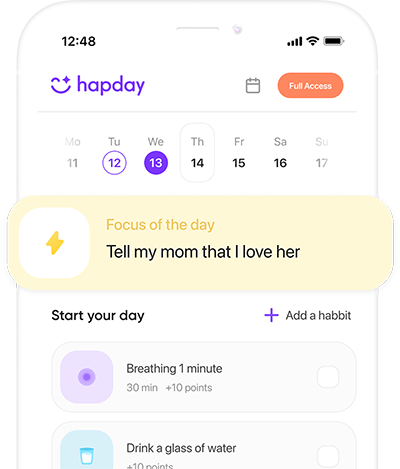Alright, let’s be honest. Our world moves at a million miles per hour, and honestly, who isn’t feeling wiped out by stress every now and then—especially Gen Z and millennial women? The avalanche of responsibilities and expectations make it kinda necessary to find ways to conquer this fatigue. Enter meditation, an ancient practice that’s been given a nod by modern science. It’s pretty much a stress-busting powerhouse that promises to clear your mind and pump up your energy. So, let’s dive into how meditation can help zap away stress-induced fatigue, with a little help from science, some numbers, and tips for making it a regular part of your life. Trust me, you’ll want to stick with me.
Table of Contents
- Understanding Stress-Induced Fatigue
- The Science of Meditation
- Meditation Techniques to Combat Stress-Induced Fatigue
- Integrating Meditation into Daily Routine
- The Long-term Benefits of Meditation on Stress-Induced Fatigue
- Conclusion
Understanding Stress-Induced Fatigue
What is Stress-Induced Fatigue?
So, here’s the deal. Stress-induced fatigue isn’t just the kind of tired you can shake off with a nap. It’s more like your mind and body stuck in overdrive—from stress—and it doesn’t fade away after a good night’s sleep. It’s like this constant buzz of exhaustion that messes with your mood, focus, and drive. Basically, it turns you into a grump who can’t think straight—no joke.
The Impact of Stress on the Body
By now, we all know stress isn’t just in our heads—it’s in our bodies too. Stress sets off these physical alarms, and at the helm of it is cortisol, our primary stress hormone. Sure, it’s great for those instant fight-or-flight moments, but keep the stress coming, and whoops, you’ve got a prolonged cortisol shower—and that? That messes with your life’s playlist. According to the American Psychological Association, chronic stress can nosedive into anxiety, depression, heart issues, and—you guessed it—extra pounds. I could tell you about the late-night cake binges, but let’s save that story!
The Statistics Behind Stress
Here’s the lowdown: The American Institute of Stress tells us 77%—yes, 77—experience physical symptoms from stress, and 73% get the mental onslaught. The American Psychological Association’s 2020 survey paints a bleaker picture for millennials and Gen Zers, who swim through stress levels higher than say, boomers. Work, healthcare, the economy… it’s like the stress trifecta for these groups.
The Science of Meditation
What is Meditation?
At its core, meditation is the art of stillness—finding a calm oasis in the chaos. Whether it’s focusing on your breath or visualizing calm spaces, meditation aims to soothe the mind and emotions. It’s got its roots in ancient traditions but has totally transformed into all kinds of modern practices.
How Meditation Affects the Brain
Want some brainy reasons to meditate? Recent studies tell us that meditation alters the landscape of your brain—in a good way. Take, for instance, a study published in Psychiatry Research: Neuroimaging. They found folks who went hardcore on an eight-week mindfulness course showed beefed-up grey matter in the hippocampus—key for learning and memory. Plus, it beefed up zones known for self-awareness and compassion. Kind of like doing mental yoga… if you ask me.
Benefits of Meditation for Mental Health
- Reduces Stress: Really—research (see Health Psychology Review) consistently shows it lowers stress markers. Who would’ve thunk?
- Enhances Emotional Health: Meditation can pep up your self-image and boost that positive vibe. The University of California found it ups life satisfaction and general well-being. Feels like we’re onto something, right?
- Lengthens Attention Span: Ever space out mid-conversation and say “wait, what?”? Meditation helps. Psychological Science says mindfulness enhances attention—more focus, fewer blanks.
- Improves Sleep: Forget endless scrolling at midnight; meditate to shush those rogue thoughts. It’s your ticket to better sleep quality—or, at least, that what they say.
Types of Meditation
- Mindfulness Meditation: You’re just watching your thoughts like fish in a tank. No judgment, no jumping in, just watching.
- Transcendental Meditation: Repeat a personalized mantra—simple sounds, words, or phrases. It’s like attending Hogwarts with guardian chants.
- Guided Meditation: An instructor walks you through calming visuals. Think of it like an audio book, but instead of dragons, it’s beaches and forests.
- Loving-Kindness Meditation: Picture radiating warm fuzzies to everyone, even the person who forgets to mute on Zoom.
Meditation Techniques to Combat Stress-Induced Fatigue
Mindfulness Meditation for Stress Relief
Mindfulness meditation is basically the rockstar of stress reduction—loads of research to back it up. It means paying attention to the present moment and being kind to your thoughts—no judgment allowed. Sounds simple, but boy, it works wonders in breaking the stress fatigue cycle.
How to Practice Mindfulness Meditation
- Find a Quiet Spot: Seriously, pick a place as drama-free as possible.
- Focus on Breathing: Slow and steady breaths, just like you mean it.
- Acknowledge Your Thoughts: See them, let ’em float by like clouds.
- Return to Breathing: Mind wandering off? Re-anchor with your breaths.
Guided Imagery for Relaxation
Picture yourself in a serene, picturesque spot—almost like a mental mini-vacation. A study from The Journal of Alternative and Complementary Medicine says this trick scores high on relaxation meters and mood boosters.
Steps for Guided Imagery
- Choose a Scene: Beach, forest, mountaintop—take your pick.
- Engage Your Senses: Feel the breeze, hear the waves, see the blue skies.
- Immerse Yourself: Sink into this peaceful haven, soak up the tranquility.
Body Scan Meditation for Tension Release
Body scan meditation is basically a head-to-toe sweep of relaxation throughout your body. Focus on each part—release the tension. Don’t worry, it’s easier than it sounds.
How to Perform a Body Scan Meditation
- Lie Down Comfortably: Get cozy, take deep breaths.
- Focus on Each Body Part: Start at your toes, work upward.
- Release Tension: As you shift focus, relax and loosen any tight spots.
Loving-Kindness Meditation to Foster Positive Emotions
It’s about spreading love and goodwill—starting with yourself and sprawling outwards, even towards that person who cut in line.
Practicing Loving-Kindness Meditation
- Sit Comfortably: Eyes closed, deep cleansing breaths.
- Focus on a Person: Flow of goodwill—start with you, spreading outward.
- Repeat Phrases: In your mind, pour out expressions of hope and peace.
Integrating Meditation into Daily Routine
Establishing a Meditation Practice
- Start Small: Just 5-10 minutes at first; increase as comfort grows.
- Set a Schedule: Carve out a regular time—stick to it. Morning, perhaps?
- Create a Dedicated Space: A personal calm corner, free of distractions.
Overcoming Common Challenges
- Restlessness: Everyone feels it at first

